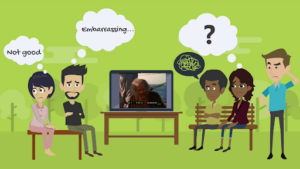Scripture In Mission – Three Major Priorities In Eradicating Bible Poverty


Digital Dialogue Daring to stay relevant in an era of information overload Author: Andreas Ernst (2021) Effective media is not about the right products or numbers,… Read More »Digital Dialogue – Daring to stay relevant in an era of information overload

In 2019 I went to Southeast Asia to oversee a video dubbing. The team there assured me they had prepared the script to fit the video’s timing, and it was ready for recording. But when we began to dub the video, we realized that, in many parts, segments were too long. In other parts, as we watched the video, we realized that we could often see the actor’s mouth moving but nothing was being said in the dubbed language. We spent many hours of several days adjusting the script to achieve a good dubbing. We needed a translation consultant to approve every change. Precious recording time was lost and the dubbing took days longer than planned.
When I returned to IMS-Waxhaw, many of my colleagues told me similar experiences they had had on the field. Something needed to be done to help prevent the “script fit blues.” All the instructions for preparing the script are in the Shell Video Manual (Step Five), which every field team receives when they apply to dub a video. But the manual can be a difficult read, especially for non-English speakers. And many people think that when it comes to script fitting, they already know everything they need to know. So I wrote the scripts, and we assembled a team to create two animated videos explaining the why and how of script fitting. Read More »Script Fit Videos
The Mobiles, Media & Ministry: Lessons for Learners & Trainers curriculum contains 41 lessons, 360 pages of trainer guide materials, 70 pages of student handouts, and over 1,000 presenter slides.
The lessons are divided into four topic areas:
Read More »Mobiles, Media, and Ministry: Lessons for Trainers and Learners